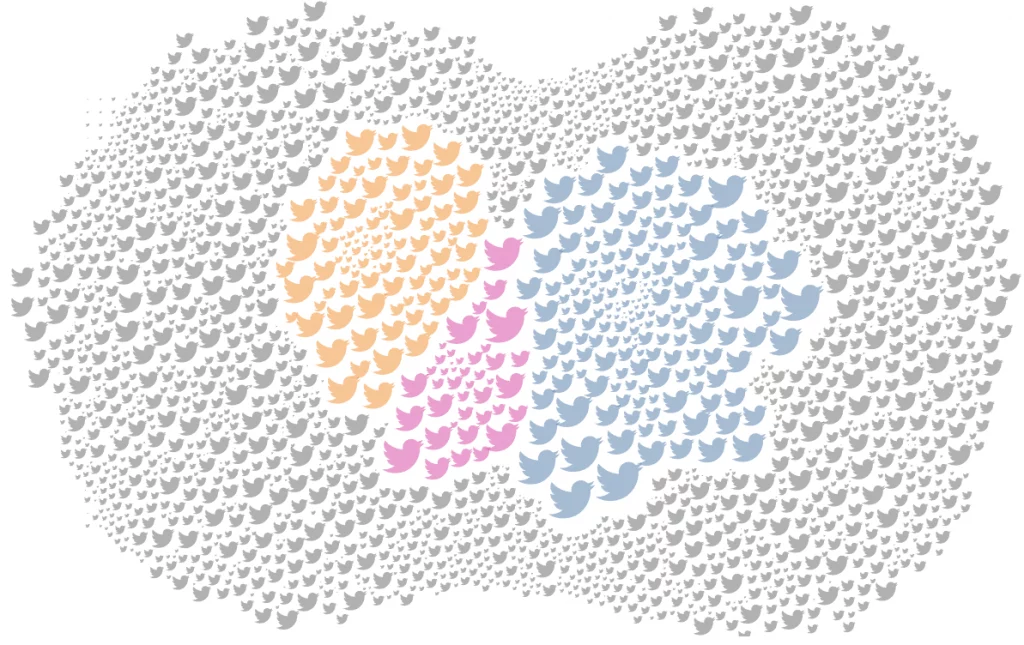Get off Twitter if you want to see your friends' posts
Tyler Freeman wrote a script to analyse the tweets he’s shown in his algorithmic Twitter timeline. 90% of his friends (i.e. the people he chose to follow) never made it to the main feed.
The diagram below shows the 90% in grey, withthe people he follows in orange, strangers are in blue, and ads are pink. This is what happens when you have software with shareholders.
I am following over 2,000 people, so to only see tweets from 10 percent of them is disconcerting; 90 percent of the people I intentionally follow, and want to hear from, are being ignored/hidden from me. When we dig deeper, it gets even worse.Source: Does Twitter’s Algorithm Hate Your Friends? | Nightingale[…]
The way I see it, the centralized path via government regulation is a short-term fix which may be necessary given the amount of power our current societal structures allot to social media corporations, but the long-term fix is to put the power into the hands of each user instead—especially considering that centralized power structures are how we got into this mess in the first place. I’m eager to see what this new world of decentralization will bring us, and how it could afford us more agency in how we donate our attention and how we manage our privacy.
